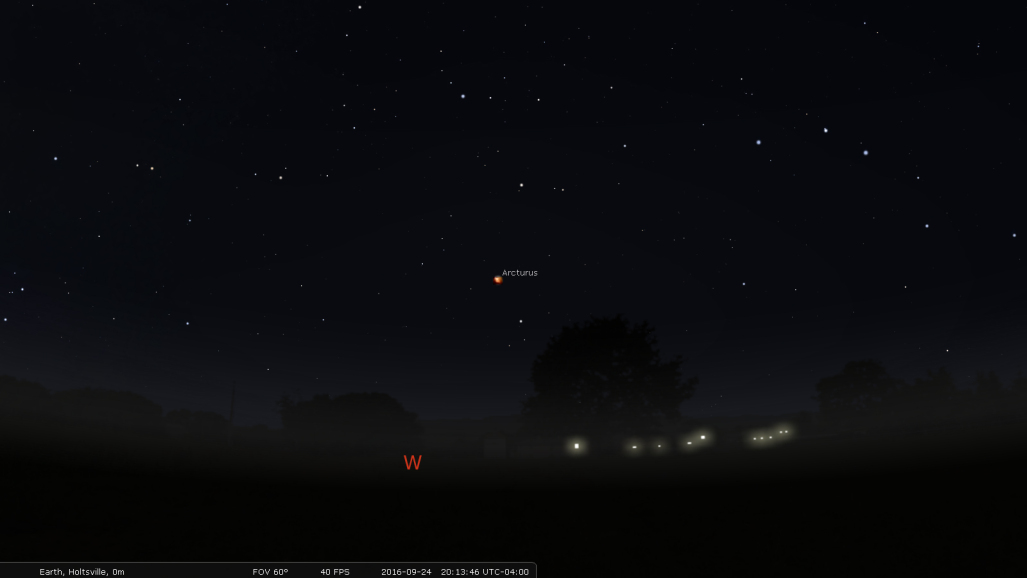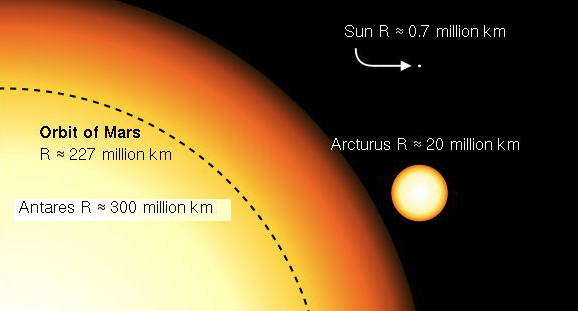Link to video at foot of page
Back in 2016 we published an article
Where are the five brightest stars in our sky?
Since then, this article has been one of our most popular and, accordingly, we’re going to continue the discussion, expanding the list from 5 (6, really, when you consider the sun) to ten. Since the list is more expansive and in the interests of keeping the articles down to a 3-5 minute read, we’re going to depart from the original format of presenting all the stars within a single article and publish a new article for each of the 10 brightest stars.
This article will be the first in a ten-part series, each published over a period of ten weeks with Arcturus the first bright star of the series. Additionally, each of the ten articles will have a corresponding video, published on our YouTube Channel. This installment’s video is linked at the foot of the page.
Going out to look up at the stars on a clear, dark night can be daunting, if not for its beauty and majesty but for what may seem like an uncountable number of stars; you often hear the comment “there are millions” of stars”! Indeed, there are quite a few more than mere “millions”; there are approximately 1022 (1 followed by 22 zeros) stars in the universe! Of those how many can we mere mortals see on a given night? Of those 1022 stars, there are about 250 billion in our Milky Way galaxy and of those, about half are forever invisible from earth, being located on the other side of the galaxy. The question then becomes, of those 125 billion or so stars accessible by observes on Earth, how many can we see with the smallest and simplest of optical instruments at our disposal, our eyes?
Decades ago, Yale University Astronomer Dorrit Hoffleit compiled the Yale Bright Star Catalog. It includes every star visible from Earth to magnitude 6.5, the naked eye limit for most of humanity. This limit is determined by the maximum size the eye’s pupil can dilate, about 0.5 cm on average (a bit smaller than a ¼ inch); that’s why astronomers keep building larger and larger telescopes since the greater the telescope’s diameter (aperture), the more light is collected and thus, the fainter we can see. Dr. Hoffleit determined that there are 9,096 stars over the entire sky, between the Northern and Southern hemispheres, within the 6.5 magnitude, human-eye limit.
Any article that discusses this topic would be incomplete if it did not pay tribute to Dr. Hoffleit. She remained active in her life-long love and pursuit of chronicling and studying the stars, beyond her 100-th birthday on March 9, 2007, within weeks of her death from from cancer.
Arcturus
We’ve published two articles about this star in as many years and this article will be more than just a compilation of those articles.
Some Thoughts about Summer, Arcturus and the Future
and
Reflections on Arcturus, The Sun and the Changing Seasons
A common theme that runs through these articles is change, how close we are metaphorically, here, on earth with our sun and solar system, to Arcturus, and how distant we are at the same time. We’re separated in time from Arcturus by 2.5 Billion years and in space by 40 light years; Arcturus is 40 Light years distant (the light we see from Arcturus, shimmering warm and bright in our summer evening sky tonight, left the star 40 years ago).
To study Arcturus is to study ourselves and the long-term evolution of our own star and how it will effect our solar system over the intervening 2.5 billion years between now and when our sun will have evolved to become a red giant star, an evolved star identical in every aspect to how Arcturus is today! Arcturus is 1 solar mass: it’s the same mass as the sun but 2.5 billion years older, or 7.1 billion years old! The one aspect of any star that principally effects its evolution is its mass. The mass of a star determines its lifespan, its luminosity, temperature and evolution from a nascent proto-star to its ultimate end-state. In the case of Arcturus and our sun, that end-state will be a white dwarf star.
Arcturus is the brightest star in Bootes, the herdsman, high in the northwest after twilight during late July and into August; it is also the brightest star in the Northern Hemisphere after Vega.

Arcturus, as depicted in this late September view of the western sky with an actual image of the star, illustrating its warm red light, superimposed atop the artifical star produced in Stellarium. Image credit: the Author and Stellarium
This current view of Arcturus, high in the northwest at twilight tonight, provides a signpost to its host constellation, Bootes, and other notable objects and constellations such as the first quarter moon to the east of Spica, the brightest star in Virgo. A catchy phrase that helps one navigate this part of the sky is: follow the arc to Arcturus and speed to Spica: the [arc] of the Big Dipper’s handle.
A new feature of our home page, an interactive Sky Tonight portal, via Stellarium, would be the perfect companion along with a pair of binoculars, to view beautiful Arcturus and the surrounding Northwest sky.
To close out this installment of “The Ten Brightest Stars“, we’d like to share an image of a stunning globular cluster acquired by Dr. James Daly, a frequent author and contributor at Astronomy for Change. What is particularly significant about this object within the context of this discussion of Arcturus, the brightest stars visible in this image (and in the cluster) are red giant stars, stars just like Arcturus! Globular clusters contain some of the oldest stars in the universe, stars similar in age to Arcturus and many just like it.
Known as Messier-3 (M-3 for short), the cluster is the third object in the list of non-cometary objects known as the the Messier Catalog, named in honor of the 18th century French astronomer, Charles Messier. The cluster is 34,000 light years distant (when you observe this object, the light striking your eyes has been traveling for 34,000 years, a time that predates the end of the last ice age (11,500 yrs ago) by 22,500 years! Even more remarkable and something that really gives you a sense of size, scale and time, these brightest stars in M-3 are at the threshold of visibility for a moderately large amateur telescope at magnitude 12.5 and fainter; recall, we previously discussed magnitude above. Arcturus, beckoning warm and bright in our evening sky like a brilliant red sapphire, would now be at the threshold of visibility! This very star, so warm and inviting in our evening sky at 40 light years, now requires a substantial telescope to be seen at all at 34,000 light years!

The globular cluster, Messier-3, as imaged by Dr. James Daly. The tiny points of light that you see, the brightest stars in the cluster, are stars just like Arcturus! Image credit: James Daly, Ph.D. Image acquired with a 20 cm reflecting telescope.
Although you will need a telescope to resolve any of the stars in this cluster, M-3 is easily observed with a good pair of binoculars. To locate it, launch the Sky Tonight portal available on our home page.
Featured image: comparison of the sun to Arcturus (an evolved, one solar-mass star) and Antares, a high-mass red giant that will soon end its life in spectacular fashion as a Type-II Supernova.
A quick, interactive web-based version of Stellarium is available here Tonight's Sky. When you launch the application, it defaults to north-facing and your location (on mobile and desktop).
Astronomy For Change: https://astronomyforchange.org
Did you enjoy this article or like what we do? Why not leave a tip or buy us a Coffee?
Follow Us On Twitter: https://twitter.com/astronomychange
Why not support us on Patreon: https://www.patreon.com/astronomyforchange
Imagination is more important than knowledge
![]()
An index of all articles can be found here.
If you enjoyed this article, please consider supporting us with a modest donation
or through a subscription on our Patreon Page
Membership at Astronomy for Change is Free!







One thought on “The Ten Brightest Stars (and where they are, with video) – 1. Arcturus”